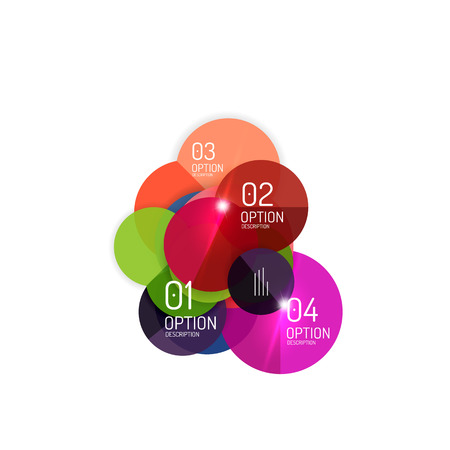1. Origins in Ancient China
Bazi, also known as the Four Pillars of Destiny, has its roots deep in ancient Chinese civilization. It first appeared during the Tang Dynasty (618–907 AD) and later became more systematized in the Song Dynasty (960–1279 AD). Bazi was created to help people understand their destiny and make important life decisions, such as marriage, career choices, and even the best times for planting crops or starting a business.
The Purpose of Bazi in Dynastic Society
In early Chinese dynasties, rulers and scholars believed that a person’s fate could be understood by analyzing the year, month, day, and hour of their birth. This information, recorded as four pairs of characters, made up the “Four Pillars.” Bazi readings were often used by emperors to select trustworthy officials or to plan major events. Over time, this practice spread from royal courts to everyday families.
Bazi in Daily Life and Governance
Bazi wasn’t just for royalty—it became a practical tool for ordinary people too. Families would consult Bazi experts before arranging marriages or making significant investments. Local leaders might use it to determine auspicious days for public ceremonies or construction projects. In this way, Bazi influenced many aspects of daily life and governance.
Key Uses of Bazi in Ancient China
| Area of Life | How Bazi Was Used |
|---|---|
| Government & Leadership | Selecting officials, planning state events |
| Family & Marriage | Choosing wedding dates, matching couples |
| Agriculture & Business | Picking lucky days for planting or opening businesses |
| Personal Guidance | Understanding one’s strengths and weaknesses |
This close connection between Bazi and daily life shows how deeply it was woven into Chinese society from the very beginning. The foundational role of Bazi set the stage for its continued development and adaptation through history.
2. Integration into Imperial Culture
Bazis Journey to the Royal Courts
Bazi, also known as the Four Pillars of Destiny, wasn’t always a tool for everyday people. Its earliest use was deeply tied to the Chinese imperial courts. Emperors and their advisors believed that understanding one’s destiny was crucial for the stability and success of the empire. As Bazi gained popularity, it became a trusted method for making important decisions at the highest levels of power.
Connection with Chinese Astrology
Bazi is closely linked with Chinese astrology, which focuses on interpreting cosmic patterns and cycles. In ancient China, astrology was more than just fortune-telling—it was seen as a science that could guide rulers in leading their people. The integration of Bazi into this system meant that it became an essential part of imperial strategy, helping leaders understand not only their own fates but also the fate of their nation.
How Bazi Influenced Major Decisions
Within the royal courts, Bazi analysis guided many significant choices. Here’s how it played a role:
| Area | How Bazi Was Used |
|---|---|
| Leadership Selection | Candidates for key positions were often evaluated using Bazi charts to predict their potential success or failure. |
| Military Strategy | Generals’ birth data were analyzed before major campaigns to choose auspicious times for battle and select the best commanders. |
| Political Alliances | Bazi helped determine compatibility between ruling families, making it important for marriage alliances and treaties. |
| Important Events | The timing of coronations, ceremonies, and even royal births was often chosen based on favorable Bazi readings. |
Bazis Legacy in Imperial Culture
Because of its association with power and authority, Bazi soon became a symbol of wisdom and prestige. Over time, its influence spread from the palace to society at large. Today, Bazi remains an important part of Chinese culture and continues to shape how people think about destiny and decision-making.

3. Philosophical and Scholarly Influences
Bazi, also known as the Four Pillars of Destiny, has a long and fascinating history. Its evolution was not just about collecting birth data or reading signs—it was deeply influenced by major philosophical movements and the work of scholars in ancient China. Lets break down how Confucianism, Taoism, and classical scholarship shaped Bazi into the sophisticated system it is today.
Confucianism: Bringing Order and Morality
Confucianism, with its focus on ethics, family harmony, and social order, had a big impact on how people viewed destiny and personal development. Scholars who followed Confucian ideas believed that understanding your Bazi chart could help you make wiser choices in life, improve your relationships, and fulfill your roles in society more responsibly. This emphasis on self-improvement helped shift Bazi from superstition toward a tool for personal growth.
Taoism: Emphasizing Balance and Nature
Taoism contributed another layer to Bazi’s framework. The concepts of Yin and Yang, as well as the Five Elements (Wood, Fire, Earth, Metal, Water), are at the heart of Taoist philosophy. These ideas helped shape Bazi’s analytical system—balancing energies within a chart reflects Taoist beliefs about harmony with nature. People began to see their destiny not as fixed fate but as something fluid that could be adjusted by living in balance with natural forces.
Classical Scholarship: Systematizing Knowledge
As scholars studied and refined Bazi, they brought logic and structure to its practice. They developed standardized methods for chart interpretation and record-keeping. Ancient texts like the “Book of Changes” (I Ching) provided frameworks for understanding cycles, patterns, and transformations in human life. Through scholarly debate and documentation, Bazi became more respected—moving away from mystical fortune-telling toward a credible analytical tradition.
Comparing Key Philosophical Influences on Bazi
| Philosophy | Main Influence on Bazi | Impact on Practice |
|---|---|---|
| Confucianism | Moral guidance; family values; social responsibility | Bazi used for self-improvement and decision-making |
| Taoism | Yin-Yang balance; Five Elements theory; harmony with nature | Bazi focuses on balancing energies for better outcomes |
| Classical Scholarship | Systematic study; codification of principles; scholarly debate | Bazi evolves into a structured analytical system |
A Transformation Over Time
The influence of these philosophies made Bazi much more than a way to predict luck or misfortune. By blending ethics, natural science, and logic, scholars turned Bazi into a trusted tool for understanding oneself and making better choices—a tradition that continues to evolve even today.
4. Modernization and Global Reach
Bazi, also known as the Four Pillars of Destiny, has come a long way from its ancient Chinese origins to become a popular tool for self-discovery around the world. In this section, well explore how Bazi adapted to modern times, found its way into Western culture, and became accessible through technology.
The Journey to the West
For centuries, Bazi was mostly practiced in China and neighboring countries. However, starting in the late 20th century, interest in Eastern metaphysics grew in the West. The translation of classic Bazi texts into English and other European languages made it possible for non-Chinese speakers to learn about this ancient system. Western authors and practitioners began writing books and offering courses that explained Bazi concepts using familiar cultural references and everyday language.
Key Milestones in Bazis Modern Globalization
| Milestone | Description | Time Period |
|---|---|---|
| Translation of Texts | Classic Bazi manuals translated into English and other Western languages. | Late 20th century |
| Western Adaptation | Bazi principles explained using Western metaphors and real-life examples. | 1990s–2000s |
| Online Learning | Courses, webinars, and forums make Bazi accessible worldwide. | 2000s–present |
| Bazi Apps & Software | User-friendly tools allow anyone to generate charts instantly. | 2010s–present |
Technology’s Role in Spreading Bazi Knowledge
The rise of the internet has been a game-changer for Bazi. Today, anyone can access online calculators, take virtual classes, or join international communities to share insights. Social media platforms like YouTube and Instagram feature Bazi experts who break down complex ideas into short, engaging videos. Mobile apps make it easy to generate your own chart with just a few taps—no need to know Chinese or advanced math!
Main Ways Technology Supports Bazi Study:
- Bazi Calculators: Quickly create personalized destiny charts online or via apps.
- E-Learning Platforms: Enroll in courses taught by global experts at your own pace.
- Online Communities: Connect with other enthusiasts across cultures and time zones.
- Social Media Content: Access bite-sized tips and explanations from influencers and teachers worldwide.
A Living Tradition for a Global Audience
Bazi continues to evolve as it reaches new audiences. Western practitioners add fresh perspectives while honoring traditional foundations. Technology breaks down barriers, making it easier than ever for people from all walks of life to explore this powerful system of self-knowledge.
5. Contemporary Impact in the U.S.
Today, Bazi—also known as the Four Pillars of Destiny—has made a unique mark on American culture. Its journey from ancient Chinese roots to modern U.S. society is a fascinating story of adaptation and reinterpretation. Americans have embraced Bazi not only for its spiritual insights but also as a practical tool for personal growth, business strategy, and wellness. Here’s how Bazi has become part of contemporary life in the United States:
Wellness Trends
Bazi has found its place within the booming wellness industry in America. Many people now look to Bazi readings alongside practices like yoga, meditation, and astrology. The focus is less on traditional fortune-telling and more on understanding oneself and improving overall well-being. Wellness coaches often incorporate Bazi into their services to help clients align their lifestyles with their natural strengths.
Entrepreneurship and Business Strategy
American entrepreneurs are increasingly interested in Eastern philosophies that offer fresh perspectives. Bazi is being used by business owners to make informed decisions about partnerships, hiring, timing for launches, and leadership styles. Here’s how some professionals apply Bazi in business:
| Application | Example |
|---|---|
| Team Building | Matching employees’ birth charts to create balanced teams |
| Business Timing | Selecting auspicious dates for important launches or negotiations |
| Leadership Development | Identifying an individual’s strengths and weaknesses for management roles |
Self-Discovery and Personal Development Communities
Bazi has become especially popular among those seeking self-discovery tools outside of Western traditions. Personal development communities appreciate Bazi’s detailed approach to personality analysis and life path mapping. Online forums, workshops, and even podcasts now discuss how individuals can use Bazi to find purpose, overcome challenges, and set meaningful goals.
Bazi in Popular Culture
The influence of Bazi can be seen in American pop culture, too. You’ll find references in books, lifestyle blogs, and even TV shows exploring alternative ways to understand destiny and relationships.
Ongoing Influence
Bazi’s integration into U.S. culture continues to grow as people seek diverse tools for self-improvement. Whether used for career planning or personal insight, Bazi provides a new lens through which Americans view themselves and their potential.


